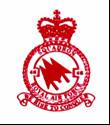History: 1942 - 1944
| |
In May 1942, the Squadron moved to Idku and began reforming as a night fighter squadron with Beaufighters for the air defence of the Eastern Mediterranean. The Squadron became operational once again at the end of the month and its main tasks were the interception of enemy
reconnaisance and bombing aircraft, principally over Alexandria, and
the escort of shipping convoys laden with supplies for Malta. At the
end of October, following the 6th Army's advance from Alamein, No 46
Squadron carried out many highly damaging attacks on the retreating
enemy columns in the Mersa Matruh area.
In November 1942, the Squadron was re-organised as a Coastal Command
squadron and operated various detachments in Malta and Benghazi to
cover particularly important convoys; in addition, ground targets
in Africa and Sicily were strafed, and barges, trawlers and other
small ships were successfully attacked along the Tripolitanian coast
with cannon and machine-gun fire.
The New Year found the Squadron preparing to resume its original role as a night fighter unit and, at the end of January, two detachments left Idku, one for Tobruk, and the other for Abu Sueir, by the end of April two more detachments were operating at St Jean and Bu Amud - with the most distant bases nearly 1000 miles apart, administration of the Squadron became very difficult, to say the least! Some out of the ordinary tasks came the Squadron's way. On one occasion, the Bu Amud detachment searched and found a convoy of native troops who were lost in the desert and long overdue; on another, a grounded destroyer was located and given air cover until it could be re-floated. April 1943 was of interest when, for the first in the war, a night fighter was controlled from a warship - the Squadron's Signal Officer, Flight Lieutenant Muir, a Canadian, having devised a homing beacon for use on the controlling ship. I July, with the score of confirmed "kills" for one year's operations in the Middle East standing at 31, the Squadron played an important if unexciting part in the sheperding of the invasion armada sailing for Sicily. The end of August found a large detachment of No 46 Squadron stationed in Cyprus with the main task of doing night intruder operations over Rhodes. On 14 September, Squadron leader Cuddie, in command of the detachment, landed on the recently seized Dodecanes Island of Cos - the first Allied aircraft to do so; less than 3 weeks later, however, the Germans invaded and No 46 Squadron lost its CO, Wing Commander GA Reid, whilst bombing and strafing the invasion force.
In the early months of 1944, with detachments operating from Abu Sueir, St Jean and Tocra, night intruder patrols over Rhodes, Cos and Crete formed the backbone of the Squadron’s activities. Many of these patrols bore fruit, for, in February and March, the Squadron claimed the destruction of 5 Junkers Ju52s and the probable destruction of 3 more. April and May were very quiet, despite the dove-tailing of patrols with No 252 Squadron over the Islands, giving complete coverage from dusk to dawn. The next few months brought better fortune, particularly in September, when the Squadron’s aircraft were controlled by HMS Ulster Queen, a GCI ship, and the score for the month amounted to 11 enemy aircraft destroyed. |
|
| | | |
|
|

